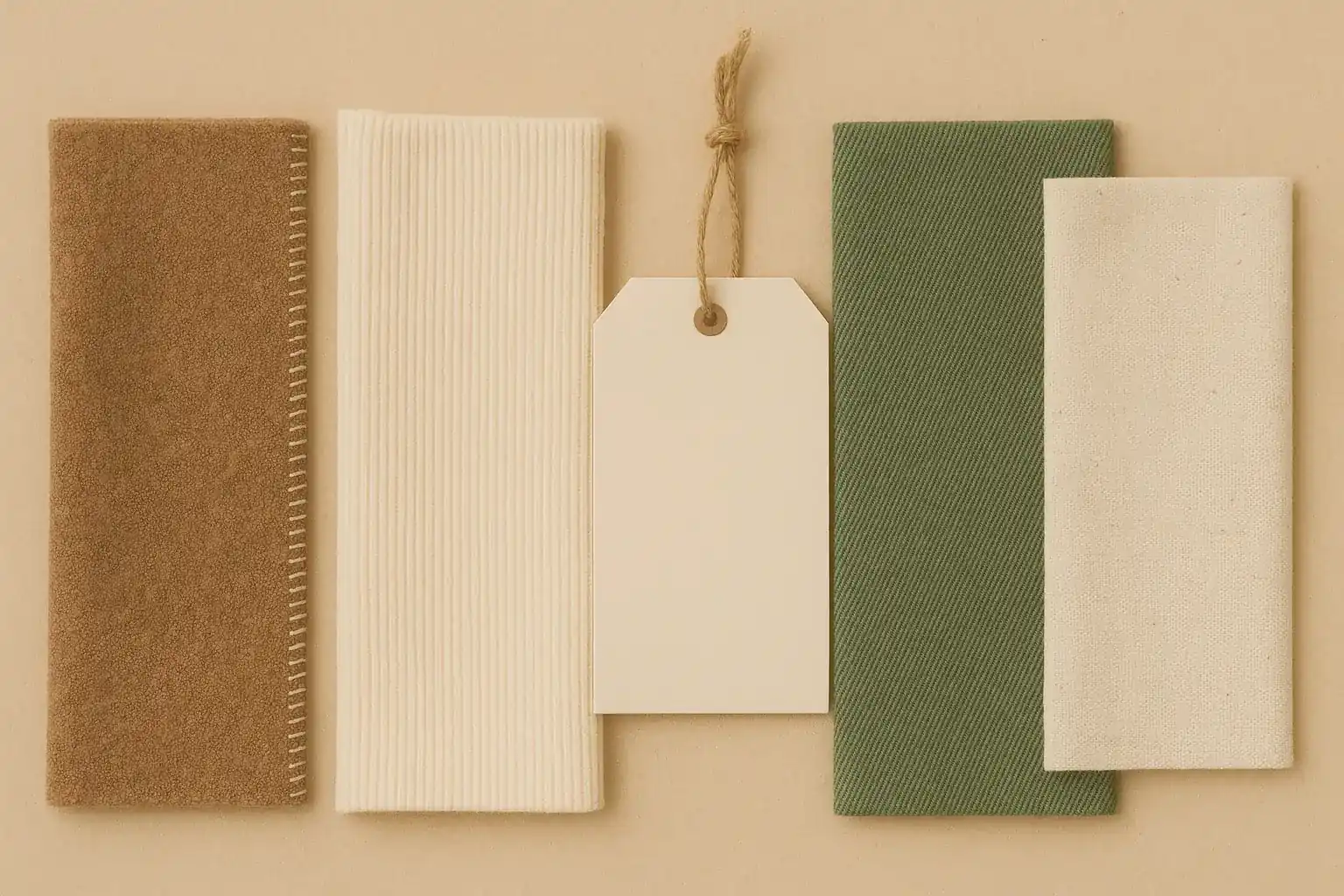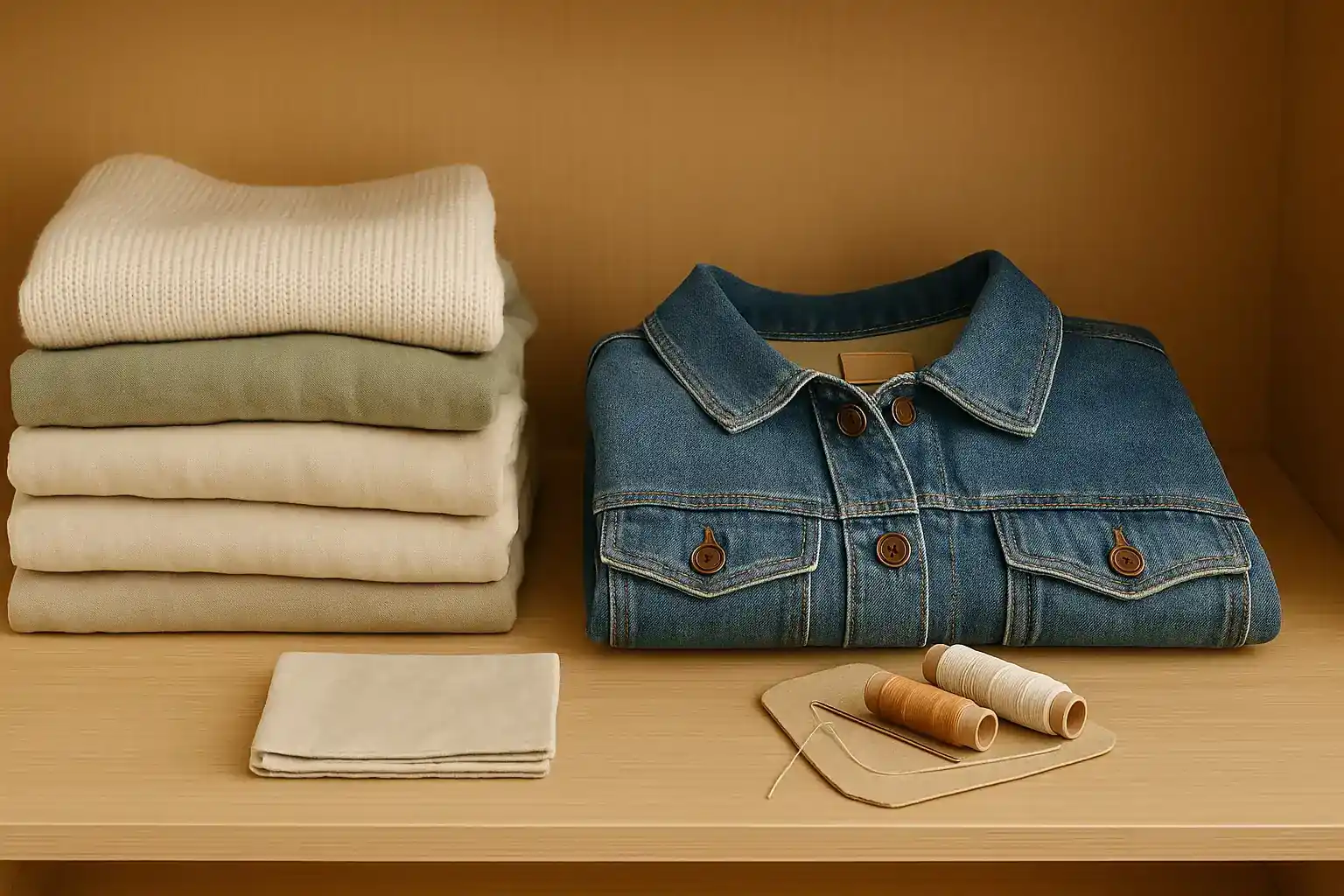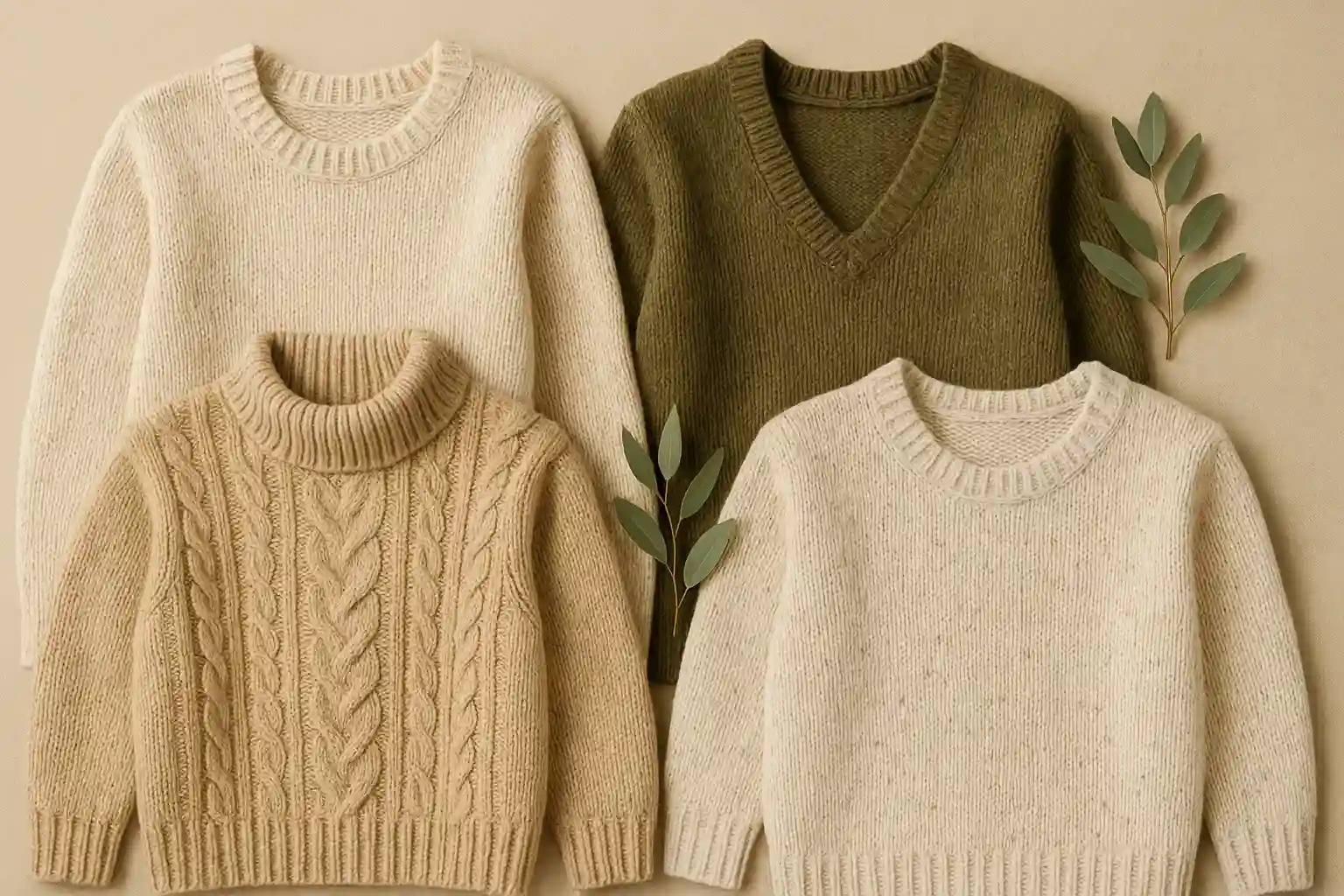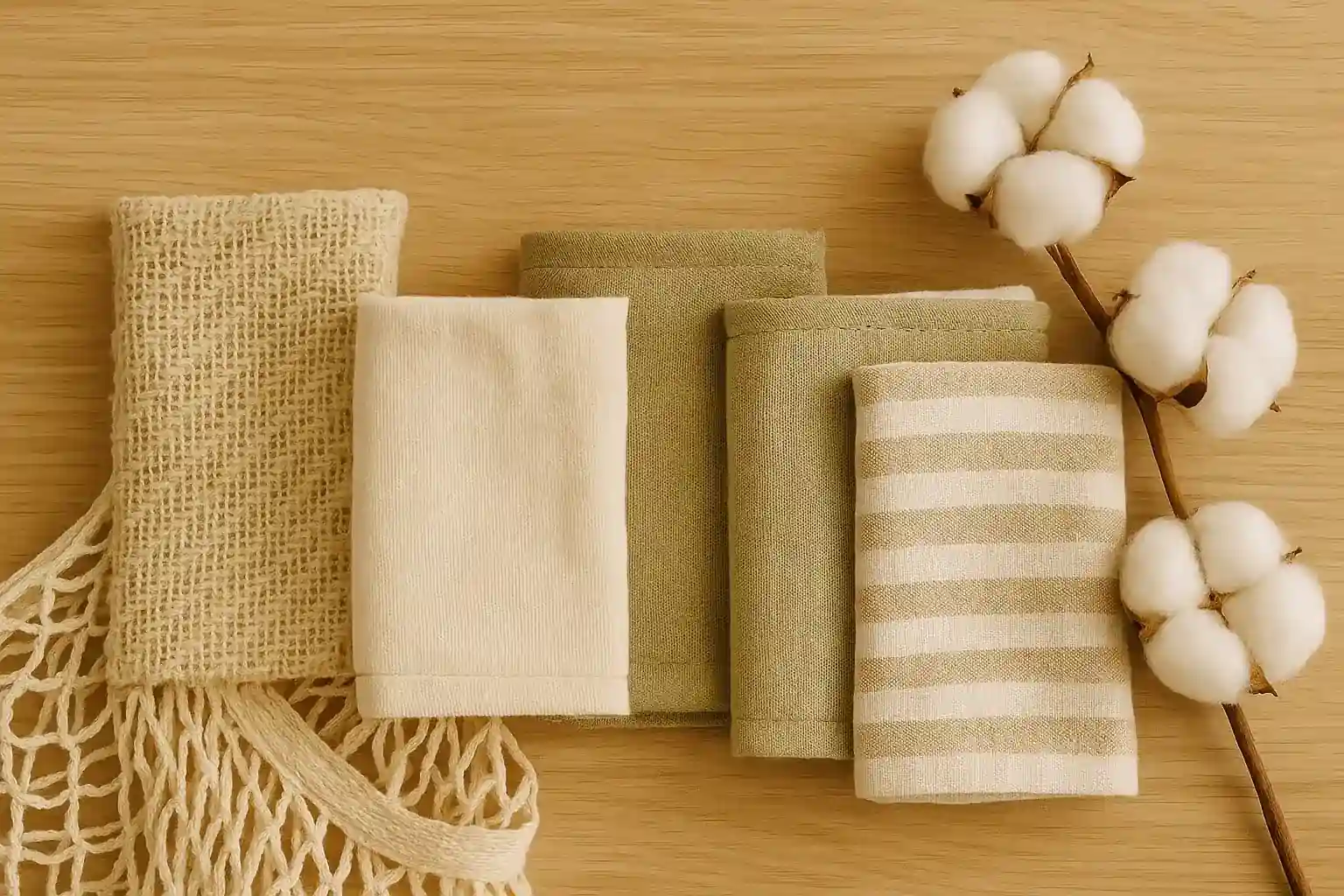Decoding Fabric Labels: What's Really Sustainable?

You're standing in a clothing store (or scrolling online), a beautiful garment in your hands (or on your screen). You care about the planet, you want to make responsible choices, so you instinctively check the label. But instead of clarity, you're met with an alphabet soup of fibers, cryptic percentages, and vague terms like "eco-friendly" or "conscious." Sound familiar?
Navigating the world of sustainable fashion can feel overwhelming, and fabric labels are often ground zero for this confusion – and unfortunately, for greenwashing. What do those fibers really mean for the environment and the people who made your clothes? How do you separate genuine sustainability from clever marketing?
Let's pull back the curtain and decode what's really sustainable when it comes to fabric labels. Our goal is to equip you with the knowledge to make more informed choices and feel more confident in your sustainable fashion journey.
Why Fabric Labels Matter (Beyond Care Instructions)
Most of us glance at the label for washing instructions or size. But the fabric composition and any accompanying certifications tell a much deeper story about the garment's impact:
- Resource Use: Where did the raw materials come from? Was it grown with excessive water and pesticides (like conventional cotton)? Or is it a renewable resource grown with minimal impact (like hemp)?
- Chemical Footprint: What chemicals were used in processing the fiber and turning it into fabric? Are harmful substances present that could affect workers, the environment, or even your skin?
- Energy and Water Consumption: How much energy and water were needed to produce and process the fabric?
- Waste and Pollution: Does the fabric production create significant waste or pollute waterways?
- Microplastics: Does the fabric shed tiny plastic fibers when washed, contributing to ocean pollution?
- Durability and End-of-Life: How long will the garment last? Can it be recycled or composted at the end of its life?
Looking at the fabric label is your first step in understanding this complex lifecycle.
Common Fabrics: Unpacking Their Sustainability Scorecard
Let's break down some common fibers you'll find on labels and what their sustainability profiles generally look like. Remember, the process of making the fabric is just as important as the raw material itself!
- Cotton (Conventional): The world's most common natural fiber, but conventional cotton is notoriously thirsty and pesticide-intensive. It can deplete soil health and expose farmers and nearby communities to harmful chemicals.
- ♻️ Sustainability Score: Generally Low.
- Organic Cotton: Grown without synthetic pesticides, herbicides, or GMOs. It requires less water than conventional cotton (especially if rain-fed) and promotes healthier soil and biodiversity. Look for certifications like GOTS (Global Organic Textile Standard).
- ♻️ Sustainability Score: Significantly Higher than conventional.
- Recycled Cotton: Made from pre-consumer waste (scraps from manufacturing) or post-consumer waste (old garments). This diverts textile waste from landfills and significantly reduces the need for virgin cotton production, saving water, energy, and chemicals.
- ♻️ Sustainability Score: High.
- Linen & Hemp: These natural fibers come from the flax and hemp plants, respectively. They are hardy crops that require minimal water, pesticides, and fertilizer. They grow relatively quickly and enrich the soil. The fibers are also strong and durable, leading to long-lasting garments.
- ♻️ Sustainability Score: High.
- Wool: A natural, renewable fiber from sheep. It's durable, temperature-regulating, and biodegradable. However, the sustainability varies greatly depending on farming practices (land use, methane emissions) and processing (washing, dyeing). Look for certifications related to animal welfare and land management.
- ♻️ Sustainability Score: Moderate to High (depends heavily on sourcing and processing).
- Silk: A natural protein fiber produced by silkworms. It's biodegradable but the conventional process involves killing the silkworms. "Peace silk" or "Ahimsa silk" allows the silkworms to emerge before harvesting, but this is less common and more expensive. The environmental impact also includes mulberry tree farming and processing chemicals.
- ♻️ Sustainability Score: Moderate (can be low depending on methods).
- Viscose / Rayon / Modal: These are regenerated cellulose fibers, often made from wood pulp. While derived from a natural source, the conventional production process is highly chemical-intensive and can cause significant air and water pollution, contributing to deforestation if not sourced sustainably.
- ♻️ Sustainability Score: Low (for conventional).
- Lyocell (e.g., Tencel™ Lyocell): Also a regenerated cellulose fiber (often from eucalyptus, beech, or spruce), but produced using a closed-loop system. This means the non-toxic solvents used are recycled and reused, minimizing waste and pollution. It's a much more environmentally friendly alternative to conventional viscose.
- ♻️ Sustainability Score: High (especially certified options like Tencel).
- Polyester & Nylon: These are synthetic fibers made from petroleum – a non-renewable resource. They are durable and versatile but their production is energy-intensive, and they are not biodegradable. Crucially, they shed microplastics when washed, polluting waterways and oceans.
- ♻️ Sustainability Score: Low.
- Recycled Polyester (rPET): Made from recycled plastic bottles or textile waste. This diverts plastic from landfills and oceans and requires less energy than producing virgin polyester. While it still sheds microplastics, it's a significantly better alternative to virgin polyester.
- ♻️ Sustainability Score: Moderate to High (mitigates some impacts of virgin polyester).
- Blends: Many garments are made from fiber blends (e.g., cotton/polyester). While this can offer desirable properties (like stretch or wrinkle resistance), it makes recycling incredibly difficult, if not impossible. Blended fabrics are often destined for landfill.
Beyond the Fiber: Decoding Certifications
Seeing "100% Cotton" or "100% Polyester" only tells part of the story. To understand the process behind the fiber, look for certifications. These are independent verifications that a product meets specific environmental and/or social standards. Some key ones to look for:
- GOTS (Global Organic Textile Standard): Guarantees that a textile is made from organic fibers and processed using environmentally and socially responsible methods throughout the supply chain. This is one of the most robust textile certifications.
- Oeko-Tex Standard 100: Certifies that the final product is free from harmful levels of chemical substances, safe for human use. It doesn't necessarily cover the environmental impact of production or social conditions.
- Bluesign®: Assesses the entire production process of textiles, ensuring minimal impact on people and the environment regarding resource consumption, emissions, and chemical use.
- Fair Trade Certified™: Focuses on social responsibility, ensuring fair wages and safe working conditions for farmers and factory workers.
- BCI (Better Cotton Initiative): Promotes better environmental and social practices in cotton farming. While an improvement over conventional cotton, it's not as stringent as organic certification.
- Recycled Content Standards (e.g., GRS - Global Recycled Standard, RCS - Recycled Content Standard): Verify the presence and amount of recycled material in a product and responsible production practices.
Seeing one or more of these certifications on a label provides much stronger evidence of sustainability claims than vague marketing terms.
Putting it All Together: Your Decoding Strategy
Decoding fabric labels for sustainability is a skill you build over time. Here's a simple strategy:
- Start with the Fiber: Identify the main fiber(s). Use the guide above to understand their general impact.
- Look for Specific, Verifiable Claims: Does it say "Organic Cotton," "Recycled Polyester," or "Lyocell"? These are better than just "sustainable fabric."
- Check for Certifications: This is crucial! Look for logos or text mentioning certifications like GOTS, Oeko-Tex, Bluesign, or Fair Trade. Research any certifications you don't recognize.
- Be Wary of Vague Language: Phrases like "eco-friendly," "green," "conscious," or "sustainable" without accompanying details or certifications are red flags for potential greenwashing.
- Consider the Whole Picture: While the label is key, also think about the brand's overall transparency, ethical practices, and commitment to sustainability beyond just the fabric.
- Don't Aim for Perfection: Finding a garment that ticks every single box can be challenging and expensive. Start by making better choices where you can. Opting for recycled over virgin synthetic, organic over conventional cotton, or certified materials is progress.
- Care for Your Clothes: The most sustainable garment is the one you already own and care for properly! Check the care label and follow instructions to make your clothes last longer, reducing the need to buy new ones. Washing at lower temperatures and air drying significantly reduces energy consumption.
Your Power as a Consumer
Understanding fabric labels empowers you to make more informed choices that align with your values. It allows you to support brands that are genuinely committed to reducing their environmental and social impact.
It's true, the labels can be confusing, and the industry still has a long way to go in terms of transparency. But by learning to decode the information available, asking questions (from brands and retailers!), and demanding more clarity, you contribute to a movement towards a more sustainable and ethical fashion future.
So next time you pick up a garment, take a moment to read the label. See what story it tells you. Every conscious choice, no matter how small, adds up. Happy decoding!
Related Blogs

10 Transformative Wardrobe Swaps for a Lighter Environmental Fashion Footprint
Learn how to reduce your fashion footprint with impactful wardrobe swaps.

Wrap Yourself in Responsibility: Choosing Sustainable Alternatives to Acrylic Sweaters
Upgrade to durable and breathable wool (certified farms), alpaca, or Tencel-blend knits.

Outsmarting the Dry Cleaner: Choosing Machine Washable Naturals for a Toxin-Free Wardrobe
Avoid toxic PERC solvents by opting for machine washable organic cotton and linen clothing.

Step Lightly: Choosing Sustainable Alternatives to Nylon Stockings
Opt for recycled nylon, biodegradable, or ladder-resistant hosiery for longer wear and less waste.

Fastening the Future: Choosing Sustainable Alternatives to Plastic Buttons
Opt for biodegradable coconut shell, corozo, or wood buttons for eco-conscious clothing.

Eco-Friendly Fabrics 101: What to Look For
A beginner’s guide to identifying sustainable & low-impact fabrics.
Stay in the Loop
Get tips and insights tailored to your interests — no spam, just sustainability.